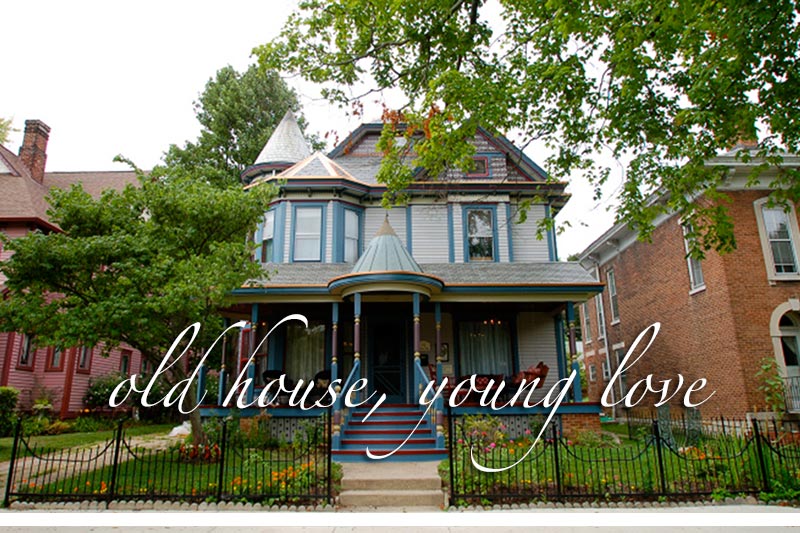by Candice Whitlow
It’s no secret that old houses (especially fixer uppers) become victims of trends over the years. These trends could be the shag carpet and paneling from the 1970’s, or the cheap, polished brass fixtures from the 1980’s and 1990’s. Fortunately, many people have woken up to the fact that trends don’t always compliment old houses, and the restoration movement is growing by the day. While the old house movement is something to be celebrated there is another trend that needs to be addressed—the “Shabby Chic” trend.
Recently I was browsing Facebook, and I came across a page for a furniture restoration. Since I love everything restoration this really piqued my interest, so I immediately clicked on their page and began browsing their albums. I came across a photo of the most beautiful 100 year old buffet. The whole piece was polished tiger oak, and there wasn’t a scratch to be found. My first thought was “Wow! They really brought that back to life!” Then I read the caption “Going to paint this buffet light blue and then give it a distressed look.” (UGH!) Unfortunately, painting wooden furniture and distressing it has become the trend in home décor, and that beautiful buffet became a victim of it. Don’t get me wrong. I think some painted and distressed pieces can be beautiful, and I have done some myself. But, antique pieces are as timeless as the old house they sit in. Painting will only make them look cheap (plus it will literally decrease their value)
Today, it’s time to put down the brush and step away from the chalk paint. I’m going to show you how to properly restore antique furniture.
I decided to use this old china cabinet as an example. It isn’t in terrible shape by any means, but it does look a little rough.

What a diamond in the rough!
The first step was to remove what was left of the peeling veneer. I used a heat gun to reactivate the glue and the painter’s tool to scrape the veneer. (Note when using a heat gun, make sure you don’t get it too close to the surface you are working on. This could burn the wood or possibly start a fire.)

For the next step I used a detail sander to smooth out the wood where I just removed the veneer. I also sanded other parts of the cabinet where the finish was wearing off and the wood was gauged. I didn’t sand down the whole piece because most of the finish on this cabinet was in very good shape.

Refinishing the minor details on this piece will make a huge difference.
After I finished sanding, I cleaned the whole cabinet thoroughly to remove any dust. Once that was done it was ready for stain. Again every piece is different, but for this particular job, Minwax Dark Walnut was the perfect color.

Be sure to wear gloves while staining or your skin and nails will be the same color as your project!
After the stain had plenty of time to dry I applied a generous amount of Tung oil to make the whole piece pop. While that was drying I removed the hardware and scrubbed it with Barkeeper’s Friend. (An old toothbrush makes the perfect scrub brush for the smaller pieces.)

Hello Gorgeous!!
If you take a more careful approach to furniture restoration you will end up with an heirloom quality piece, which will last for years to come. The key is to make it look well preserved, not brand new.
It’s time to put an end to trend crimes on antiques!

AUTHOR CANDICE WHITLOW
As CIRCA’s resident old house restoration expert, Candi has lived her whole life in fixer-uppers. Her love for old houses stems from growing up in Doniphan MO, where there is an old house on every corner and the roots of her family tree run deep. She currently manages her father’s company, BARCO Construction and Design. Candi is on the board of the Doniphan Neighborhood Assistance Program and has worked closely with the City of Doniphan Historic Preservation Commission, documenting the city’s historic downtown buildings. She devotes most of her spare time to restoring her 1920s cottage-style bungalow that she shares with her husband Jake and their two dogs Rowdy and Mac.





